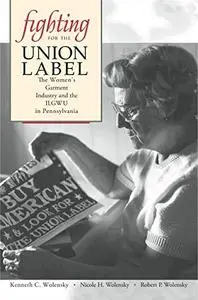Fighting for the Union Label: The Women's Garment Industry and the Ilgwu in Pennsylvania By Kenneth C. Wolensky, Nicole H. Wolensky, Robert P. Wolensky
2002 | 289 Pages | ISBN: 0271021675 | PDF | 3 MB
2002 | 289 Pages | ISBN: 0271021675 | PDF | 3 MB
It is no coincidence that the garment industry gained a foothold in Pennsylvania?’s hard-coal region as mines were closing or reducing operations. "Runaway" factories, especially ones from Manhattan, set up shop in mining towns where labor was plentiful and unions scarce. By the 1930s garment factories employed thousands of wives and daughters of unemployed or underemployed coal miners in the Wyoming Valley but organizing workers would prove difficult for the International Ladies?’ Garment Workers?’ Union (ILGWU). Fighting for the Union Label tells the story of how workers in the Wyoming Valley, led by Min Lurye Matheson and her husband, Bill, banded together and built one of the largest and most activist movements of garment workers in the ILGWU?’s vast network. Workers?’ education, political activism, a health care center, and a widely recognized chorus were among the union?’s trademarks. Despite the union?’s influence, however, the apparel industry migrated to the American South and then overseas in the 1970s and 1980s. Tens of thousands of workers throughout the state and nation would loose their jobs, and sweatshops would become part of the economic landscape in countries like Guatemala. The first major work on the garment industry and its workers in Pennsylvania, Fighting for the Union Label draws extensively upon the Wyoming Valley Oral History Project (co-directed by Ken and Robert Wolensky) which has collected the reminiscences of more than 325 workers, factory owners, public officials, and others. The story of the dynamic Min Matheson and the rise and fall of the garment industry provides key insights into the deindustrialization of northeastern Pennsylvania



